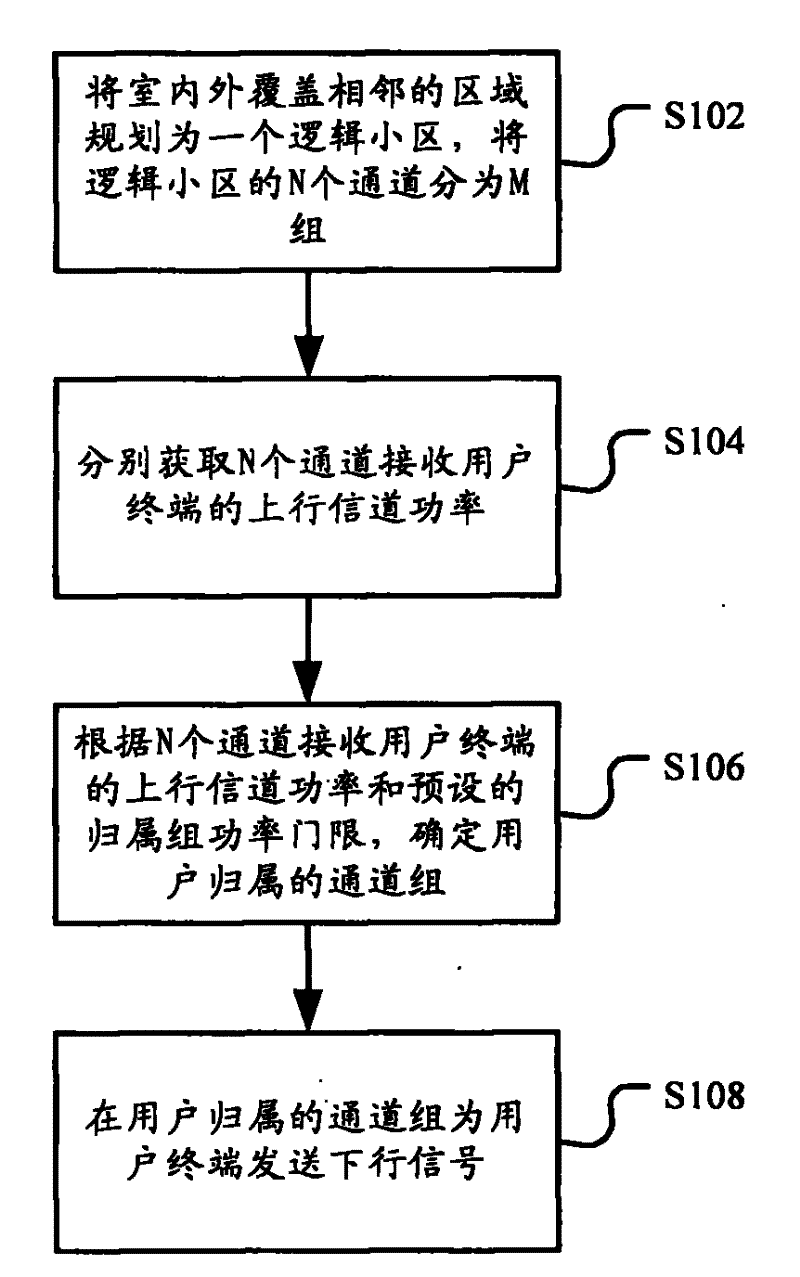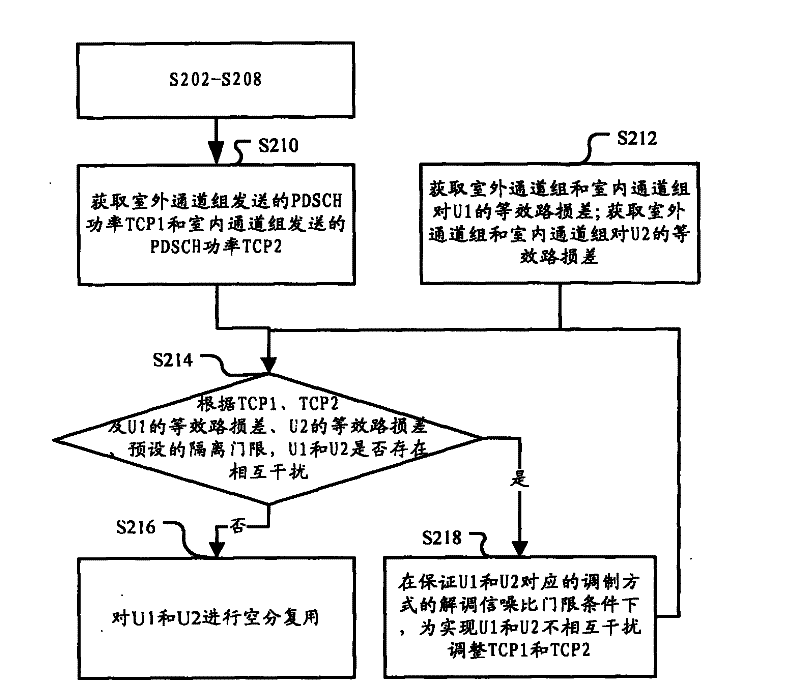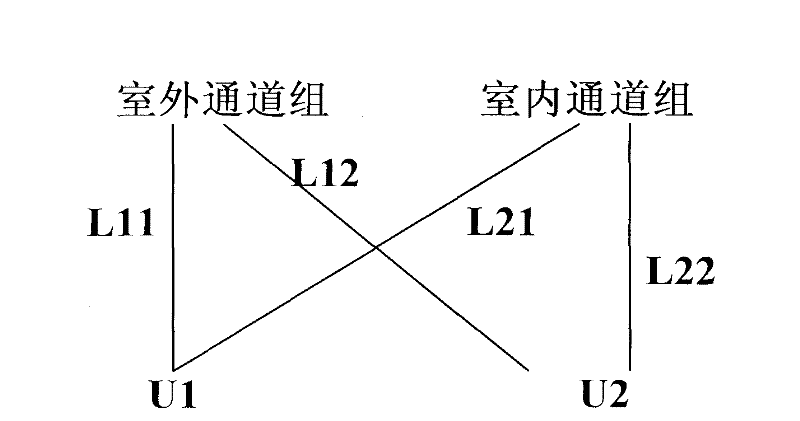Method and device of indoor and outdoor united coverage
A technology for indoor and outdoor channels, applied in electrical components, wireless communication, network planning, etc., to avoid the problem of ping-pong switching
- Summary
- Abstract
- Description
- Claims
- Application Information
AI Technical Summary
Problems solved by technology
Method used
Image
Examples
Embodiment 1
[0030] figure 1 It is a flow chart of a combined indoor and outdoor coverage method according to an embodiment of the present invention. Such as figure 1 As shown, this embodiment includes:
[0031] Step S102: Plan the adjacent indoor and outdoor coverage areas as a logical cell, and divide the N channels of the logical cell into M groups;
[0032] Step S104: Obtain the uplink channel power of the user terminal receiving the N channels respectively;
[0033] Step S106: Determine the channel group to which the user belongs according to the uplink channel power received by the user terminal on the N channels and the preset power threshold of the belonging group;
[0034] Step S108: Send downlink signals for the user terminal in the channel group to which the user belongs.
[0035] In step S102 of this embodiment, the indoor and outdoor coverage adjacent areas are planned as a logical cell, this logical cell includes N receiving channels, and the N channels are divided into M...
Embodiment 2
[0043] In this embodiment, on the basis of the first embodiment, a technical solution of space division multiplexing is added, so as to improve the throughput of the system. Specifically, for the user terminal U1 belonging to the outdoor channel group and the user terminal U2 belonging to the indoor channel group, it is determined whether U1 and U2 can perform space division multiplexing.
[0044] figure 2 It is a flow chart of the indoor and outdoor combined coverage method according to Embodiment 2 of the present invention. Such as figure 2 As shown, this embodiment includes:
[0045] Step S202: Plan the adjacent indoor and outdoor coverage areas as a logical cell, and divide the N channels of the logical cell into M groups;
[0046] Step S204: Obtain the uplink channel power of the N channel receiving user terminals respectively;
[0047] Step S206: Determine the channel group to which the user belongs according to the uplink channel power received by the user termina...
Embodiment 3
[0062] This embodiment will specifically describe the present invention in conjunction with specific examples. This example includes:
[0063] Step S1. Plan the adjacent indoor and outdoor coverage areas as a logical cell. This logical cell contains 9 receiving channels. Divide the 9 channels into 2 groups according to the area covered by the antenna (indoor or outdoor), and the smart antenna is a group. , the indoor distributed antenna is a group;
[0064] Step S2. The receiving power of user 1 in channel 1 to channel 8 of the outdoor channel group portion1 is -99dbm, then R_portion1=-99dbm+10×lg8=-90dbm, and the RSCP of user 1 in the indoor channel group portion2 is -110dbm, then R_portion_max =-110dbm, when the belonging threshold is 15db, since (-90)-(-110)>15, it can be determined that user 1 belongs to the outdoor channel group portion1;
[0065] Step S3. The receiving power of user 2 in channels 1 to 8 of the outdoor channel group portion1 is -109dbm, then R_portion1=...
PUM
 Login to View More
Login to View More Abstract
Description
Claims
Application Information
 Login to View More
Login to View More - R&D
- Intellectual Property
- Life Sciences
- Materials
- Tech Scout
- Unparalleled Data Quality
- Higher Quality Content
- 60% Fewer Hallucinations
Browse by: Latest US Patents, China's latest patents, Technical Efficacy Thesaurus, Application Domain, Technology Topic, Popular Technical Reports.
© 2025 PatSnap. All rights reserved.Legal|Privacy policy|Modern Slavery Act Transparency Statement|Sitemap|About US| Contact US: help@patsnap.com



